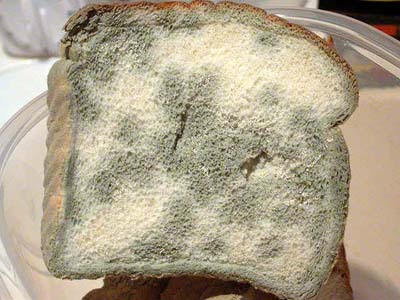Bread mold keeps the secret of disabling the gene causing the disease
Most people see bread when they see bread, they leave it. The remaining percentage sees a potential world of small mold species. A University of Missouri scientist with a research team found new mechanisms in the reproductive cycle of a landmark.
This mechanism protects the mold from the abnormal expression of the gene by " diverging " the individual pair of genes in the process of mitosis (reducing stool). The findings may have certain implications for higher organisms and target precisely the undesirable genes, such as those of the HIV virus.
Assistant professor Patrick Shiu of the Department of Biology at MU University of Arts and Sciences said: 'Diving in the feces is also available in worms, mice and humans. Although not all have a common mechanism, but the principle of the odd DNA orientation for 'diving' seems to have both simple and complex organisms. Knowing the process of DNA in mold is crucial to the technique of diving unwanted genes, such as pathogenic genes. '

(Photo: PolyLam.com)
Shiu and his colleagues found that every sex cell in the mold has an internal mechanism to 'scan' pairs of chromosomes to find anomalous chromosome . They found that when a chromosome in a transcription pair had an extra gene that did not appear in the same chromosome, all copies of that gene were deactivated during the fecal reduction because they were considered sign of the intruder. The researchers call this process ' meiotic silencing by unpaired DNA (MSUD).
Shiu said: 'MSUD protects mold from any intrusion at the time of chromosome particularly susceptible to the spread of viruses as well as inserted gene sequences'.
Shiu's research has increased the understanding of how to "turn off" unwanted genes, and to clarify the genetic components in the MSUD. Research can also be applied in many industries, pharmaceuticals and agriculture.
Because of his great contribution to the field of genetic research, Shiu recently received the Beadle and Tatum Prize (named after the Nobel Prize winners George Beadle and Edward Tatum). The prize was awarded for the first outstanding research on the model of Neurospora bread mold.
Shiu's latest research, funded by the National Science Foundation, is the focus of Fungal Genetics and Biology.
- Is it dangerous to eat moldy bread?
- Distinguish edible and non-edible mold
- Keep the bread fresh for 2 months
- Bread and more than 14,000 years of history
- If bread is half molded, can you eat the rest of the cake without mold?
- Sliced bread - eat all day, but how does it come about, not everyone knows
- What happens when you regularly eat bread?
- Identifying the most important gene causes obesity
- Mold (Aspergillus) - Doctor of fermentation
- The 3 most basic principles when enjoying French bread - a delicate dish
- When to throw food in the refrigerator
- If you know how complicated it is to make bread, you will completely change your look
 Why do potatoes have eyes?
Why do potatoes have eyes? 'Tragedy' the world's largest carnivorous life: Death becomes ... public toilet
'Tragedy' the world's largest carnivorous life: Death becomes ... public toilet Tomatoes were once considered 'poisonous' for 200 years
Tomatoes were once considered 'poisonous' for 200 years Detecting microscopic parasites on human face
Detecting microscopic parasites on human face